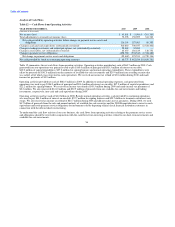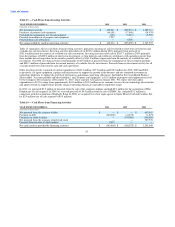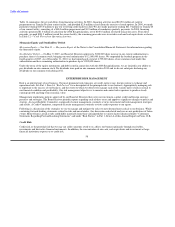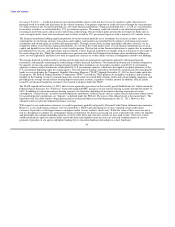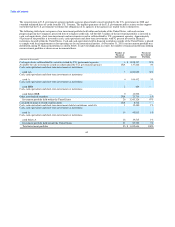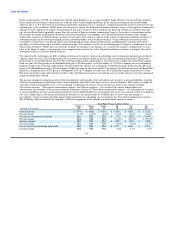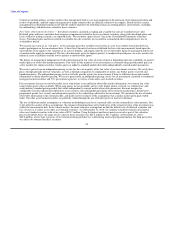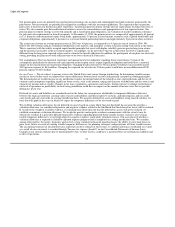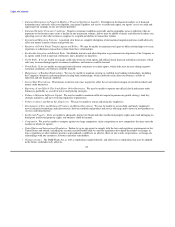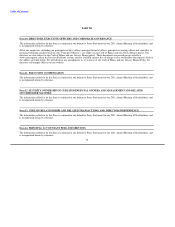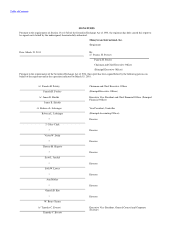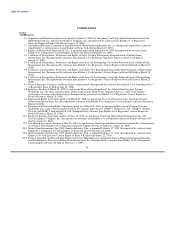MoneyGram 2010 Annual Report Download - page 69
Download and view the complete annual report
Please find page 69 of the 2010 MoneyGram annual report below. You can navigate through the pages in the report by either clicking on the pages listed below, or by using the keyword search tool below to find specific information within the annual report.
Table of Contents
Goodwill — We perform impairment testing of our goodwill balances annually as of November 30, and whenever an impairment
indicator is identified. The testing is performed by comparing the estimated fair value of our reporting units to their carrying values. The
fair value of our reporting units is estimated based on expected future cash flows discounted using a weighted-average cost of capital rate
(the "discount rate"). Our discount rate is based on our debt and equity balances, adjusted for current market conditions and investor
expectations of return on our equity. In addition, an assumed terminal value is used to project future cash flows beyond base years.
Assumptions used in our impairment testing, such as forecasted growth rates and the discount rate, are consistent with our internal
forecasts and operating plans. The estimates and assumptions regarding expected cash flows, terminal values and the discount rate require
considerable judgment and are based on historical experience, financial forecasts and industry trends and conditions.
In connection with the annual impairment test for 2010, we assessed the Global Funds Transfer reporting unit, which had assigned
goodwill of $428.7 million. No goodwill is assigned to the other reporting units. The annual impairment test indicated a fair value for the
Global Funds Transfer reporting unit that was substantially in excess of the reporting unit's carrying value. This excess is consistent with
our expectations for the reporting unit and market indicators. Accordingly, we believe the goodwill assigned to the Global Funds Transfer
reporting unit is not impaired. If the discount rate for the Global Funds Transfer reporting unit increases by 50 basis points from the rate
used in our fair value estimate, fair value would be reduced by approximately $78.4 million, assuming all other components of the fair
value estimate remain unchanged. If the growth rate for the Global Funds Transfer reporting unit decreases by 50 basis points from the
rate used in our fair value estimate, fair value would be reduced by approximately $28.2 million, assuming all other components of the
fair value estimate remain unchanged. Our estimated fair value for the Global Funds Transfer reporting unit would continue to be
substantially in excess under either scenario.
Pension obligations — Through our qualified pension plan and various supplemental executive retirement plans, collectively referred to
as our "pension" plans, we provide defined benefit pension plan coverage to certain of our employees and former employees of Viad. Our
pension obligations under these plans are measured as of December 31 (the "measurement date"). Pension benefits and the related
expense are based upon actuarial projections using assumptions regarding mortality, discount rates, long-term return on assets and other
factors. Following are the weighted-average actuarial assumptions used in calculating the benefit obligation as of each measurement date
and the net periodic benefit cost for the year ended December 31:
2010 2009 2008
Net periodic benefit cost:
Discount rate 5.80% 6.30% 6.50%
Expected return on plan assets 8.00% 8.00% 8.00%
Rate of compensation increase 5.75% 5.75% 5.75%
Projected benefit obligation:
Discount rate 5.30% 5.80% 6.30%
Rate of compensation increase 5.75% 5.75% 5.75%
At each measurement date, the discount rate is based on the then current interest rates for high-quality, long-term corporate debt securities
with maturities comparable to our obligations. The rate of compensation increase is applicable to the supplemental executive retirement
plans (the "SERPs") only and is based on historical compensation patterns for the plan participants and management's expectations for
future compensation patterns. During 2010, benefit accruals under all but one of the SERPs were frozen; for the one SERP, service credit
is frozen, but future pay increases continue to be applicable for active participants. Accordingly, the rate of compensation has a nominal
impact on the valuation for 2010 and future years.
66


